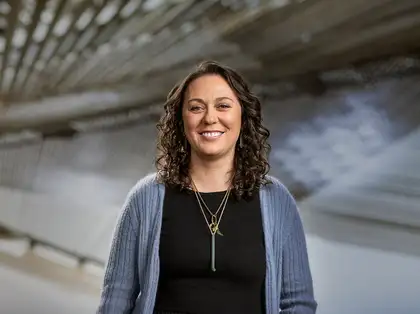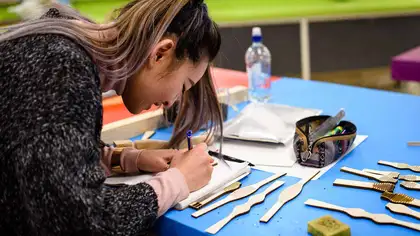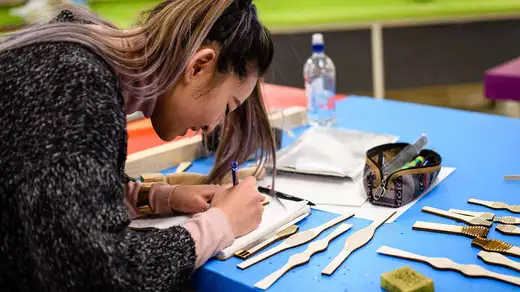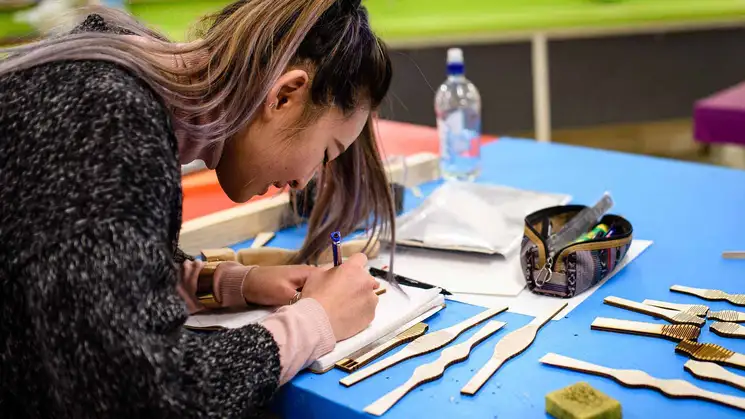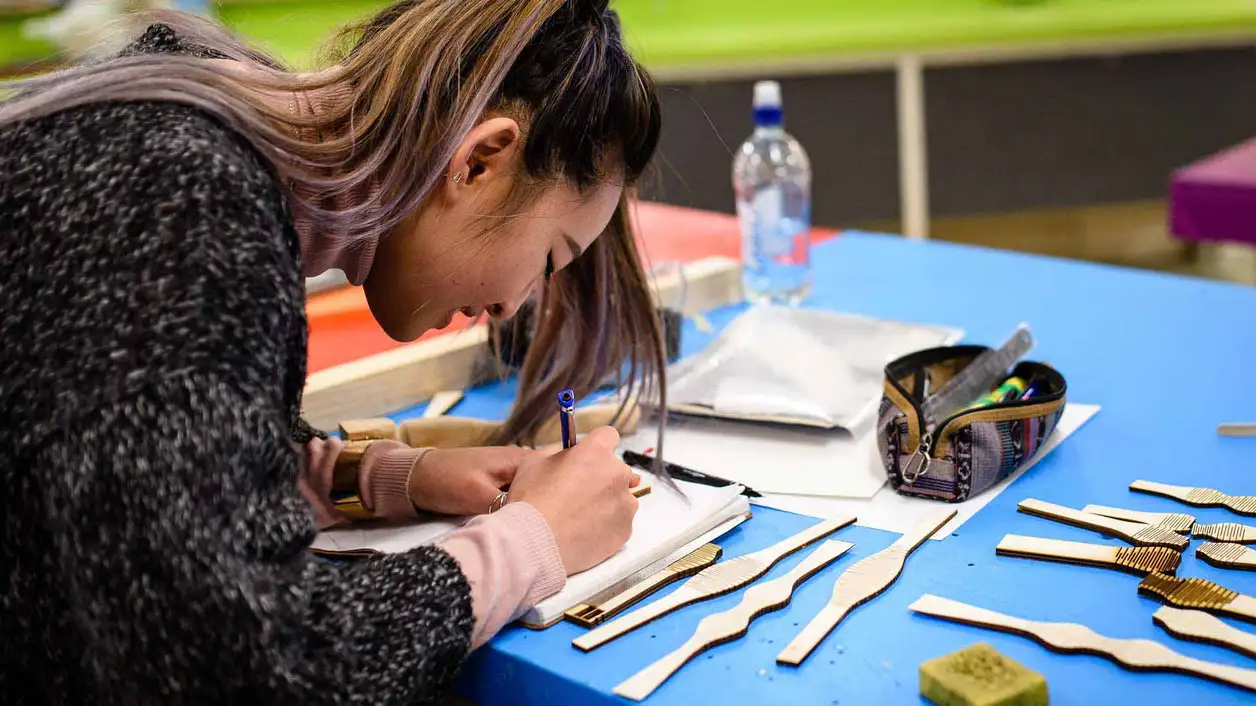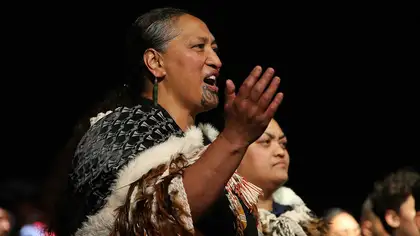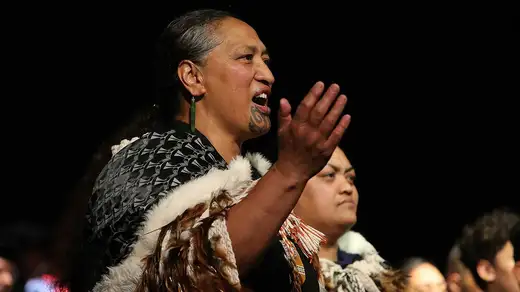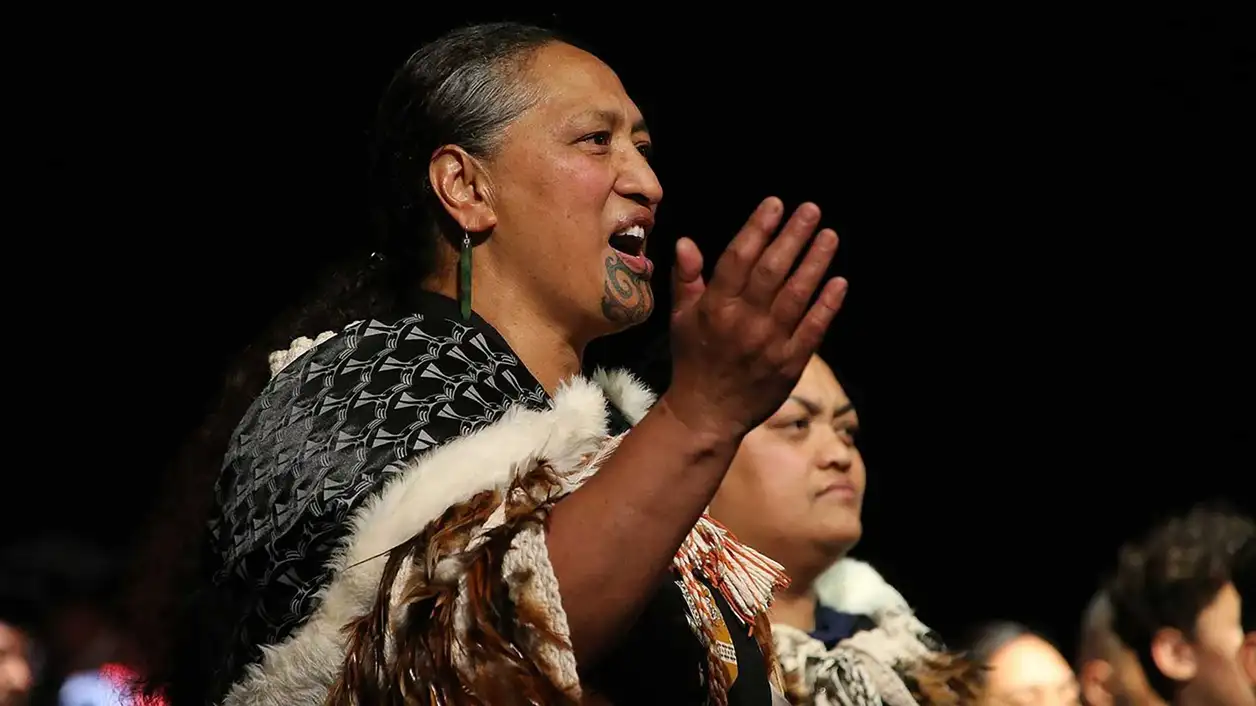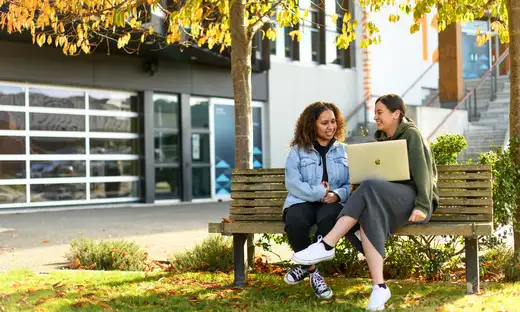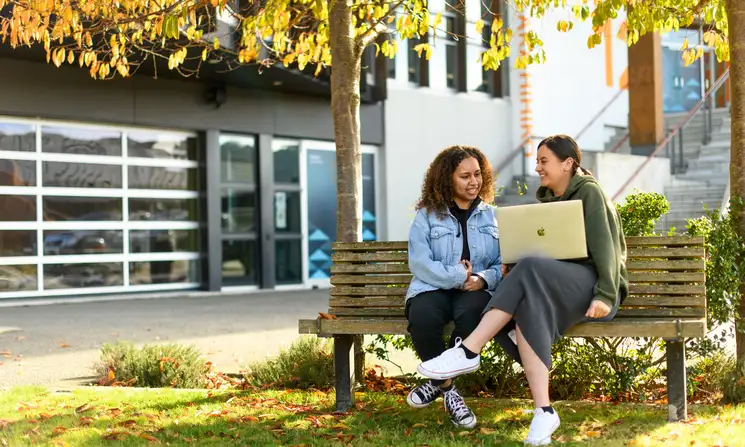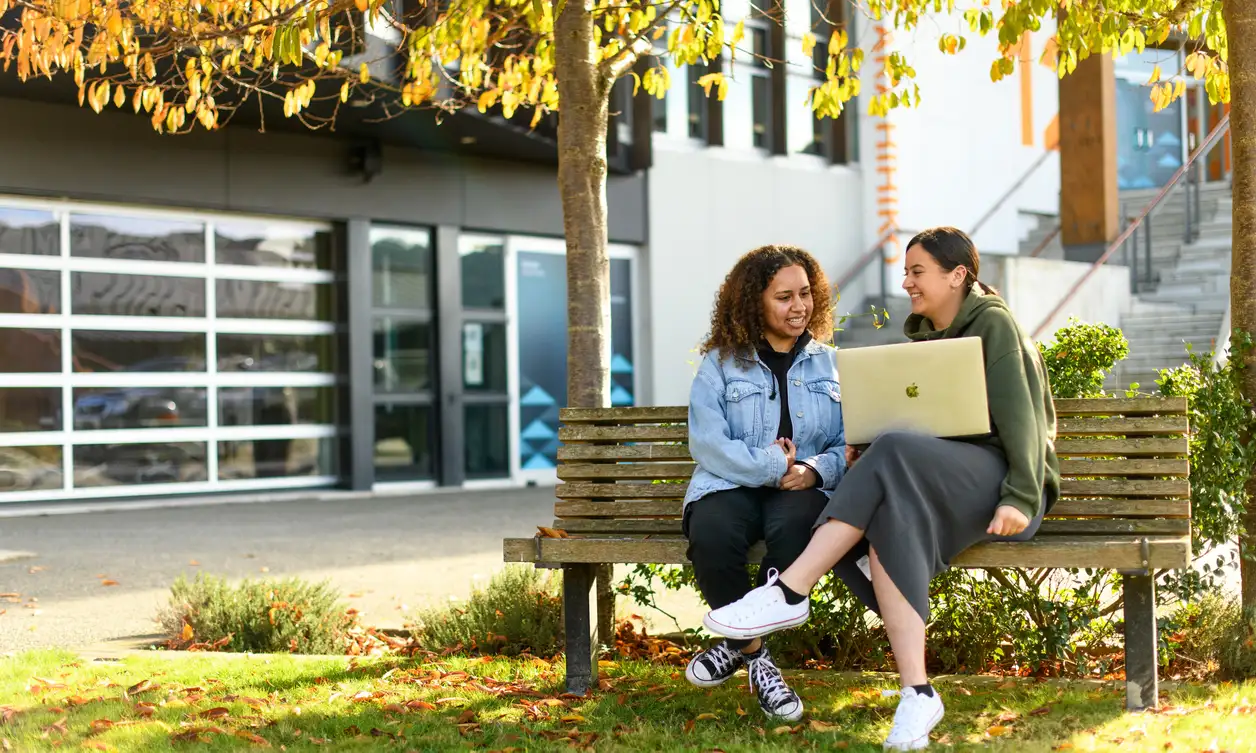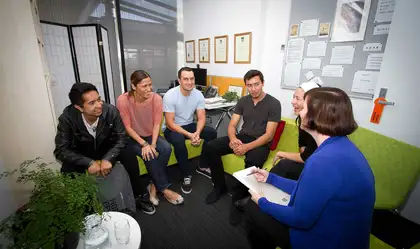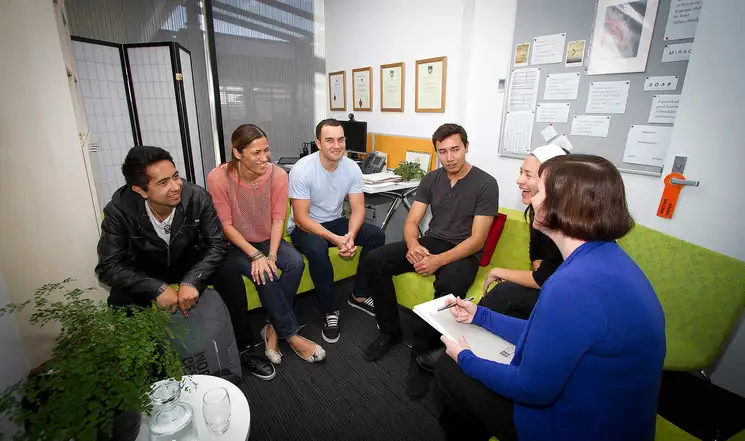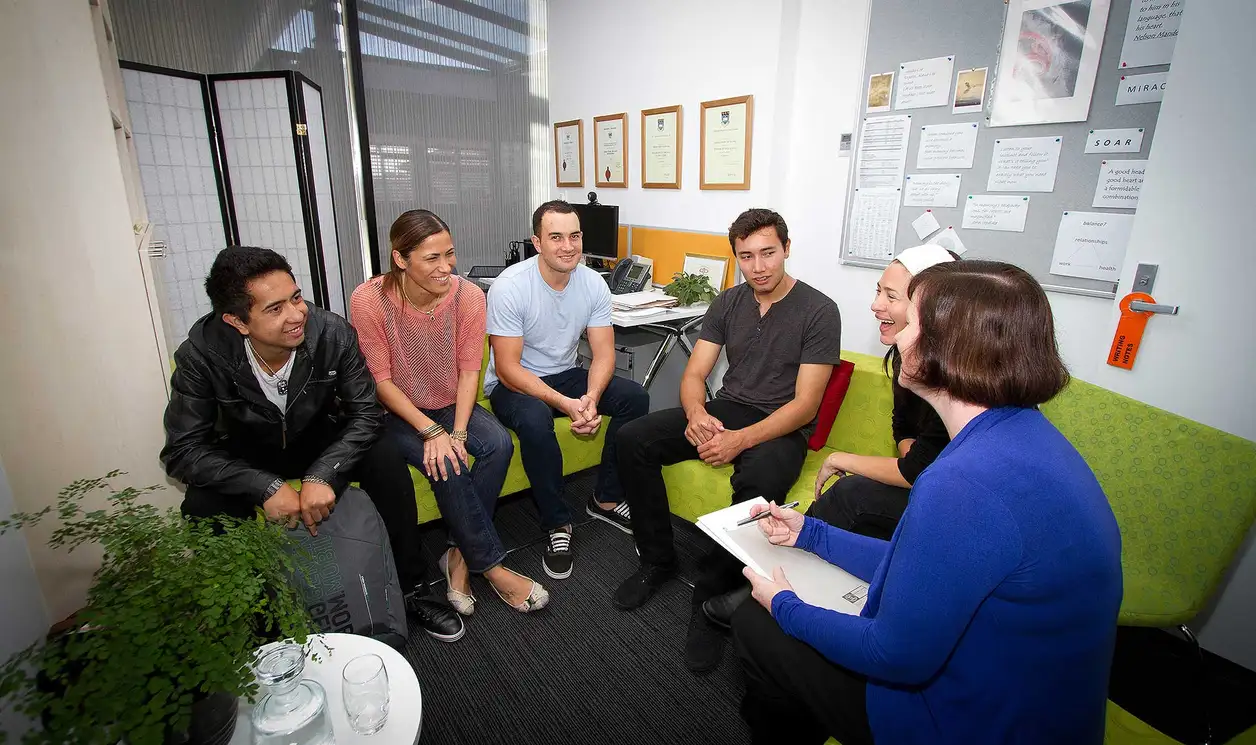Kia ora Erena! You’ve had a long association with Massey, can you tell us about your journey?
It goes a fair way back! I came to Massey straight from Palmerston North Girls High School and completed the Māori Visual Arts Bachelor’s Degree in 2006 before completing my Master’s in Māori Visual Arts. I went away and worked for a couple of years before coming back to teach about 10 years ago.
As a former student and now lecturer and practicing artist, you must have a unique insight into a student’s journey?
Yeah, it’s been really nice coming full circle. Having completed the qualification myself allows me to relate to the students easily. Being a practicing artist and working with students shows them what’s attainable and they can see the reality of what practice life is like. For example, as part of my work with the Mataaho Collective, we were working on a 14m high weaving piece and the only place that was tall enough was the boiler room on the Manawatū campus, so as the collective was making this work, students could come and see first-hand what it was like. In the past I’ve also had students travel with me to overseas art exhibitions I’ve been involved in, so they get to experience global indigenous art scenes too.
Wow, what an incredible experience. Did you have similar experiences when you were a student too?
Yes, I did. Because the classes are smaller sizes, and my teachers were also practicing artists or active in the arts community, we got to experience what it was like and see first-hand what life might be like after university. Things like attending exhibition openings and hearing all the kōrero involved, it was nice to see future pathways for us.
What are some of the elements that make the Bachelor of Māori Visual Arts unique?
Toioho ki Āpiti has been going for 28 years and is based at our Manawatū campus in Te Pūtahi-a-Toi School of Māori Knowledge, so students take compulsory courses on te reo and tikanga as part of the qualification. This learning starts to impact the work they make, influenced by who they are. They learn their art can help to be a voice of what they want to say to the world.
And because most of us lecturers practice art as well, we can help to connect students to future opportunities. I want our students to feel confident to step into spaces that I didn’t necessarily feel confident or comfortable stepping into as an emerging wahine Māori artist. I really hope I see them out there on the global stage in institutions and in NZ and making work for the public, our people and other indigenous people. I hope that they don’t have any apprehension or nervousness to step into some of these spaces.
What do you enjoy most about your role?
The opportunity to foster creativity and critical thinking in students through the lens of Māori culture. I especially enjoy guiding students through the process of conceptual thinking, helping them navigate the cultural and historical significance of their artwork. Seeing them develop confidence in their artistic practice and realising their creative ideas is the most fulfilling aspect of my role.
I love the collaborative spirit within our small team, our commitment to our programme is a collective responsibility, fostering a mutually respectful and supportive working relationship that prioritises excellent practice. The team extends to our students, creating a humble inclusive environment where we often share kai together. Assessments are treated as school-wide events, with all academic staff involved in providing critique and feedback to students.
When you’re not at Massey, what could we find you doing?
I’m a busy Māmā to 3 children aged 10, 7 and 3. We only speak te reo Māori to our kids at home and my husband is also a practicing artist, so we have a creative home life which I love.
I have my own art practice and belong to the Mataaho Collective, which is another job on its own. I’m always looking ahead to see what’s next and I’ve got projects lined up for the next few years.
